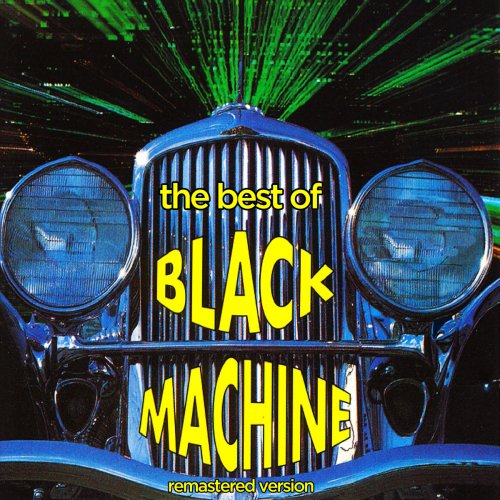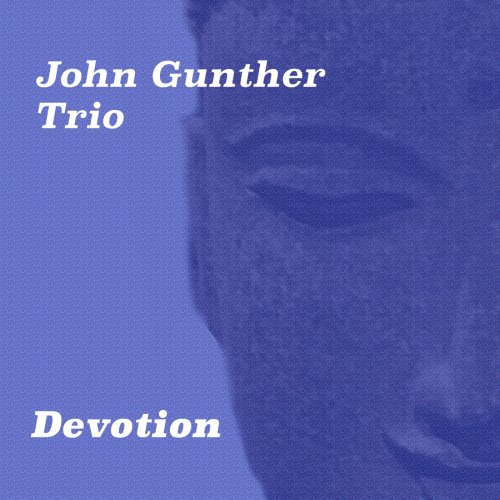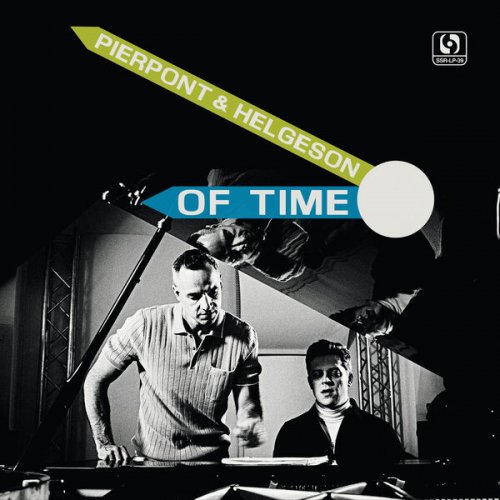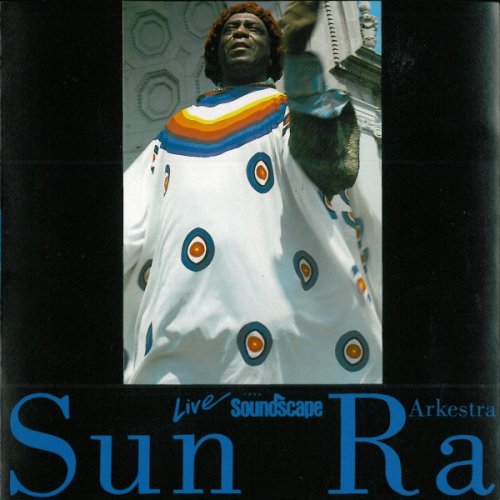Stan Getz - The Complete Savoy Recordings (2002)
- 01 May, 00:42
- change text size:
Facebook
Twitter
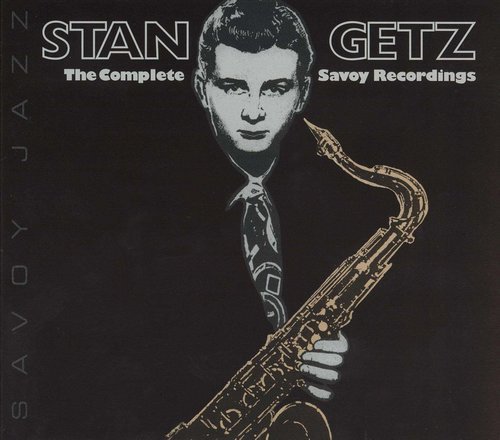
Artist: Stan Getz
Title: The Complete Savoy Recordings
Year Of Release: 2002
Label: Savoy Jazz[SVY 17121]
Genre: Jazz, Bop, Cool
Quality: FLAC (tracks + .cue,log)
Total Time: 64:31
Total Size: 246 MB(+3%)
WebSite: Album Preview
TracklistTitle: The Complete Savoy Recordings
Year Of Release: 2002
Label: Savoy Jazz[SVY 17121]
Genre: Jazz, Bop, Cool
Quality: FLAC (tracks + .cue,log)
Total Time: 64:31
Total Size: 246 MB(+3%)
WebSite: Album Preview
01. Opus de Bop (master) (2:34)
02. Opus de Bop (previously unissued) (2:42)
03. Opus de Bop (previously unissued) (2:39)
04. And the Angels Swing (2:44)
05. Running Water (2:46)
06. Don't Worry 'Bout Me (2:38)
07. Sweet Miss (master) (3:01)
08. Sweet Miss (alternate) (3:02)
09. Loaded (master) (3:03)
10. Loaded (alternate) (3:04)
11. Grab Your Axe Max (master) (3:16)
12. Grab Your Axe Max (alternate) (3:25)
13. Always (3:22)
14. Stan Gets Along (master) (2:55)
15. Stan Gets Along (alternate) (2:58)
16. Stan's Mood (master) (2:42)
17. Stan's Mood (alternate) (2:44)
18. Slow (master) (2:53)
19. Slow (alternate) (2:58)
20. Slow (previously unissued) (2:53)
21. Fast (master) (3:06)
22. Fast (alternate) (3:06)
Ask a Stan Getz fan to describe his Lester Young-influenced tenor sax playing, and the sort of words that one typically hears include sublime, caressing, gentle, lyrical, and even ethereal. Words like tough, hard, and aggressive usually don't come to mind -- that is, unless someone is describing his earliest recordings. In 1945 and 1946, Getz did in fact display a harder tone at times. But by the end of the '40s, he was the epitome of subtle, understated cool jazz. Spanning 1945-1949, The Complete Savoy Recordings takes a look at the saxman's early work and shows how much he evolved during the '40s. This 2002 release focuses on sessions from 1945, 1946, and 1949. The 1945 session finds an 18-year-old Getz being featured as a sideman by trombonist Kai Winding, while the 1946 session marked Getz's recording debut as a leader. And Getz is also the leader on the 1949 session, which unites him with two similar and equally Lester Young-minded tenor men: Zoot Sims and Al Cohn (both of whom played with Getz in Woody Herman's big band). It's safe to say that on the 1945 and 1946 sides, Getz was still finding his voice -- he had a strong command of his instrument, but his playing wasn't as distinctive or as personal as it would become a few years later. The Getz on the 1945 and 1946 material is, for the most part, a rugged, aggressive, hard-blowing bebopper who had only recently discovered Charlie Parker's innovations; the Getz heard on the 1949 date is the essence of cool jazz (which favored a kinder, gentler approach to bop changes). The Complete Savoy Recordings falls short of essential and isn't recommended to casual listeners, although jazz historians and hardcore Getz fans will find it to be a fascinating listen.~Alex Henderson
X Lossless Decoder version 20210101 (153.1)
XLD extraction logfile from 2021-04-25 09:51:45 -0700
Stan Getz / The Complete Savoy Recordings
Used drive : PIONEER BD-RW BDR-XD05 (revision 3.10)
Media type : Pressed CD
Ripper mode : XLD Secure Ripper
Disable audio cache : OK for the drive with a cache less than 1375KiB
Make use of C2 pointers : NO
Read offset correction : 667
Max retry count : 100
Gap status : Analyzed, Appended (except HTOA)
TOC of the extracted CD
Track | Start | Length | Start sector | End sector
---------------------------------------------------------
1 | 00:00:00 | 02:33:60 | 0 | 11534
2 | 02:33:60 | 02:41:70 | 11535 | 23679
3 | 05:15:55 | 02:38:47 | 23680 | 35576
4 | 07:54:27 | 02:43:70 | 35577 | 47871
5 | 10:38:22 | 02:46:08 | 47872 | 60329
6 | 13:24:30 | 02:38:25 | 60330 | 72204
7 | 16:02:55 | 03:00:72 | 72205 | 85776
8 | 19:03:52 | 03:02:00 | 85777 | 99426
9 | 22:05:52 | 03:03:30 | 99427 | 113181
10 | 25:09:07 | 03:03:38 | 113182 | 126944
11 | 28:12:45 | 03:16:22 | 126945 | 141666
12 | 31:28:67 | 03:25:25 | 141667 | 157066
13 | 34:54:17 | 03:21:43 | 157067 | 172184
14 | 38:15:60 | 02:55:00 | 172185 | 185309
15 | 41:10:60 | 02:57:47 | 185310 | 198631
16 | 44:08:32 | 02:42:13 | 198632 | 210794
17 | 46:50:45 | 02:43:55 | 210795 | 223074
18 | 49:34:25 | 02:52:65 | 223075 | 236039
19 | 52:27:15 | 02:58:10 | 236040 | 249399
20 | 55:25:25 | 02:53:00 | 249400 | 262374
21 | 58:18:25 | 03:06:05 | 262375 | 276329
22 | 61:24:30 | 03:05:45 | 276330 | 290249
AccurateRip Summary (DiscID: 00320b28-03272d85-400f1e16)
Track 01 : OK (v2, confidence 12/12)
Track 02 : OK (v2, confidence 12/12)
Track 03 : OK (v2, confidence 12/12)
Track 04 : OK (v2, confidence 12/12)
Track 05 : OK (v2, confidence 12/12)
Track 06 : OK (v2, confidence 12/12)
Track 07 : OK (v2, confidence 12/12)
Track 08 : OK (v2, confidence 12/12)
Track 09 : OK (v2, confidence 12/12)
Track 10 : OK (v2, confidence 12/12)
Track 11 : OK (v2, confidence 12/12)
Track 12 : OK (v2, confidence 12/12)
Track 13 : OK (v2, confidence 12/12)
Track 14 : OK (v2, confidence 12/12)
Track 15 : OK (v2, confidence 12/12)
Track 16 : OK (v2, confidence 12/12)
Track 17 : OK (v2, confidence 12/12)
Track 18 : OK (v2, confidence 12/12)
Track 19 : OK (v2, confidence 12/12)
Track 20 : OK (v2, confidence 12/12)
Track 21 : OK (v2, confidence 12/12)
Track 22 : OK (v2, confidence 12/12)
->All tracks accurately ripped.
All Tracks
Album gain : -2.56 dB
Peak : 0.972412
Statistics
Read error : 0
Jitter error (maybe fixed) : 0
Retry sector count : 0
Damaged sector count : 0
Track 01
Filename : /Volumes/El Segundo/Rips/Stan Getz - The Complete Savoy Recordings (2002) [FLAC]/01 Opus de Bop.flac
Pre-gap length : 00:02:00
Track gain : -2.41 dB
Peak : 0.825378
CRC32 hash (test run) : 85D90FCA
CRC32 hash : 85D90FCA
CRC32 hash (skip zero) : 9B3389E0
AccurateRip v1 signature : FA24532A
AccurateRip v2 signature : C8E3A730
->Accurately ripped (v2, confidence 12/12)
Statistics
Read error : 0
Jitter error (maybe fixed) : 0
Retry sector count : 0
Damaged sector count : 0
Track 02
Filename : /Volumes/El Segundo/Rips/Stan Getz - The Complete Savoy Recordings (2002) [FLAC]/02 Opus de Bop (#1).flac
Pre-gap length : 00:02:10
Track gain : -2.19 dB
Peak : 0.939667
CRC32 hash (test run) : 8407DEDB
CRC32 hash : 8407DEDB
CRC32 hash (skip zero) : F0CE52B9
AccurateRip v1 signature : 7FD7B14E
AccurateRip v2 signature : 10E8380C
->Accurately ripped (v2, confidence 12/12)
Statistics
Read error : 0
Jitter error (maybe fixed) : 0
Retry sector count : 0
Damaged sector count : 0
Track 03
Filename : /Volumes/El Segundo/Rips/Stan Getz - The Complete Savoy Recordings (2002) [FLAC]/03 Opus de Bop (#2).flac
Pre-gap length : 00:02:03
Track gain : -2.08 dB
Peak : 0.972412
CRC32 hash (test run) : B7EFE441
CRC32 hash : B7EFE441
CRC32 hash (skip zero) : 3294DD96
AccurateRip v1 signature : CE32D978
AccurateRip v2 signature : 4850288E
->Accurately ripped (v2, confidence 12/12)
Statistics
Read error : 0
Jitter error (maybe fixed) : 0
Retry sector count : 0
Damaged sector count : 0
Track 04
Filename : /Volumes/El Segundo/Rips/Stan Getz - The Complete Savoy Recordings (2002) [FLAC]/04 And the Angels Swing.flac
Pre-gap length : 00:02:60
Track gain : -1.97 dB
Peak : 0.910736
CRC32 hash (test run) : 60562BDC
CRC32 hash : 60562BDC
CRC32 hash (skip zero) : 0EBBFB0B
AccurateRip v1 signature : 42E648CA
AccurateRip v2 signature : 0BF6D868
->Accurately ripped (v2, confidence 12/12)
Statistics
Read error : 0
Jitter error (maybe fixed) : 0
Retry sector count : 0
Damaged sector count : 0
Track 05
Filename : /Volumes/El Segundo/Rips/Stan Getz - The Complete Savoy Recordings (2002) [FLAC]/05 Running Water.flac
Pre-gap length : 00:01:65
Track gain : -2.03 dB
Peak : 0.819000
CRC32 hash (test run) : EE1A3334
CRC32 hash : EE1A3334
CRC32 hash (skip zero) : F66E9520
AccurateRip v1 signature : E4808C4D
AccurateRip v2 signature : 8DB1848D
->Accurately ripped (v2, confidence 12/12)
Statistics
Read error : 0
Jitter error (maybe fixed) : 0
Retry sector count : 0
Damaged sector count : 0
Track 06
Filename : /Volumes/El Segundo/Rips/Stan Getz - The Complete Savoy Recordings (2002) [FLAC]/06 Don't Worry 'bout Me.flac
Pre-gap length : 00:02:58
Track gain : -3.25 dB
Peak : 0.882263
CRC32 hash (test run) : 30BFD900
CRC32 hash : 30BFD900
CRC32 hash (skip zero) : 936F1ED2
AccurateRip v1 signature : 5842D87D
AccurateRip v2 signature : 502B6150
->Accurately ripped (v2, confidence 12/12)
Statistics
Read error : 0
Jitter error (maybe fixed) : 0
Retry sector count : 0
Damaged sector count : 0
Track 07
Filename : /Volumes/El Segundo/Rips/Stan Getz - The Complete Savoy Recordings (2002) [FLAC]/07 Sweet Miss (master).flac
Pre-gap length : 00:02:08
Track gain : -2.24 dB
Peak : 0.745880
CRC32 hash (test run) : FDC487E9
CRC32 hash : FDC487E9
CRC32 hash (skip zero) : C2FFAE57
AccurateRip v1 signature : 57A72716
AccurateRip v2 signature : 3C49C3CC
->Accurately ripped (v2, confidence 12/12)
Statistics
Read error : 0
Jitter error (maybe fixed) : 0
Retry sector count : 0
Damaged sector count : 0
Track 08
Filename : /Volumes/El Segundo/Rips/Stan Getz - The Complete Savoy Recordings (2002) [FLAC]/08 Sweet Miss (alternate).flac
Pre-gap length : 00:02:07
Track gain : -1.63 dB
Peak : 0.788757
CRC32 hash (test run) : 857405C5
CRC32 hash : 857405C5
CRC32 hash (skip zero) : A4BA5CE0
AccurateRip v1 signature : BC2EDC1A
AccurateRip v2 signature : 51D3BCE2
->Accurately ripped (v2, confidence 12/12)
Statistics
Read error : 0
Jitter error (maybe fixed) : 0
Retry sector count : 0
Damaged sector count : 0
Track 09
Filename : /Volumes/El Segundo/Rips/Stan Getz - The Complete Savoy Recordings (2002) [FLAC]/09 Loaded (master).flac
Pre-gap length : 00:02:20
Track gain : -3.00 dB
Peak : 0.799530
CRC32 hash (test run) : 8E828F5E
CRC32 hash : 8E828F5E
CRC32 hash (skip zero) : C7177E0A
AccurateRip v1 signature : 29C796DE
AccurateRip v2 signature : B39343AA
->Accurately ripped (v2, confidence 12/12)
Statistics
Read error : 0
Jitter error (maybe fixed) : 0
Retry sector count : 0
Damaged sector count : 0
Track 10
Filename : /Volumes/El Segundo/Rips/Stan Getz - The Complete Savoy Recordings (2002) [FLAC]/10 Loaded (alternate).flac
Pre-gap length : 00:02:00
Track gain : -5.04 dB
Peak : 0.933716
CRC32 hash (test run) : ACF18E14
CRC32 hash : ACF18E14
CRC32 hash (skip zero) : 9DFAFBEC
AccurateRip v1 signature : 467F2717
AccurateRip v2 signature : C687143C
->Accurately ripped (v2, confidence 12/12)
Statistics
Read error : 0
Jitter error (maybe fixed) : 0
Retry sector count : 0
Damaged sector count : 0
Track 11
Filename : /Volumes/El Segundo/Rips/Stan Getz - The Complete Savoy Recordings (2002) [FLAC]/11 Grabe Your Axe Max (master).flac
Pre-gap length : 00:02:00
Track gain : -1.67 dB
Peak : 0.704315
CRC32 hash (test run) : 20D801FA
CRC32 hash : 20D801FA
CRC32 hash (skip zero) : 35160342
AccurateRip v1 signature : 4722D9A2
AccurateRip v2 signature : 80625C19
->Accurately ripped (v2, confidence 12/12)
Statistics
Read error : 0
Jitter error (maybe fixed) : 0
Retry sector count : 0
Damaged sector count : 0
Track 12
Filename : /Volumes/El Segundo/Rips/Stan Getz - The Complete Savoy Recordings (2002) [FLAC]/12 Grabe Your Axe Max (alternate).flac
Pre-gap length : 00:02:10
Track gain : -0.96 dB
Peak : 0.749725
CRC32 hash (test run) : 1A8DB85C
CRC32 hash : 1A8DB85C
CRC32 hash (skip zero) : A2E63CD1
AccurateRip v1 signature : F49ABD0E
AccurateRip v2 signature : 82071C1B
->Accurately ripped (v2, confidence 12/12)
Statistics
Read error : 0
Jitter error (maybe fixed) : 0
Retry sector count : 0
Damaged sector count : 0
Track 13
Filename : /Volumes/El Segundo/Rips/Stan Getz - The Complete Savoy Recordings (2002) [FLAC]/13 Always.flac
Pre-gap length : 00:02:12
Track gain : -1.55 dB
Peak : 0.735870
CRC32 hash (test run) : 2B3B26E8
CRC32 hash : 2B3B26E8
CRC32 hash (skip zero) : 1AF80653
AccurateRip v1 signature : B81E06BA
AccurateRip v2 signature : 9D06F61D
->Accurately ripped (v2, confidence 12/12)
Statistics
Read error : 0
Jitter error (maybe fixed) : 0
Retry sector count : 0
Damaged sector count : 0
Track 14
Filename : /Volumes/El Segundo/Rips/Stan Getz - The Complete Savoy Recordings (2002) [FLAC]/14 Stan Gets Along (master).flac
Pre-gap length : 00:02:45
Track gain : -2.98 dB
Peak : 0.827332
CRC32 hash (test run) : 6943AA47
CRC32 hash : 6943AA47
CRC32 hash (skip zero) : E2A5A4C4
AccurateRip v1 signature : A0564A85
AccurateRip v2 signature : 43E5FCBA
->Accurately ripped (v2, confidence 12/12)
Statistics
Read error : 0
Jitter error (maybe fixed) : 0
Retry sector count : 0
Damaged sector count : 0
Track 15
Filename : /Volumes/El Segundo/Rips/Stan Getz - The Complete Savoy Recordings (2002) [FLAC]/15 Stan Gets Along (alternate).flac
Pre-gap length : 00:01:60
Track gain : -2.41 dB
Peak : 0.872742
CRC32 hash (test run) : 29ABF2B4
CRC32 hash : 29ABF2B4
CRC32 hash (skip zero) : 374EE089
AccurateRip v1 signature : FB7D9719
AccurateRip v2 signature : 0BFF8B33
->Accurately ripped (v2, confidence 12/12)
Statistics
Read error : 0
Jitter error (maybe fixed) : 0
Retry sector count : 0
Damaged sector count : 0
Track 16
Filename : /Volumes/El Segundo/Rips/Stan Getz - The Complete Savoy Recordings (2002) [FLAC]/16 Stan's Mood (master).flac
Pre-gap length : 00:01:60
Track gain : -1.85 dB
Peak : 0.636383
CRC32 hash (test run) : FAFA0F10
CRC32 hash : FAFA0F10
CRC32 hash (skip zero) : 1D6D2ECD
AccurateRip v1 signature : E23EE541
AccurateRip v2 signature : E35E59F3
->Accurately ripped (v2, confidence 12/12)
Statistics
Read error : 0
Jitter error (maybe fixed) : 0
Retry sector count : 0
Damaged sector count : 0
Track 17
Filename : /Volumes/El Segundo/Rips/Stan Getz - The Complete Savoy Recordings (2002) [FLAC]/17 Stan's Mood (alternate).flac
Pre-gap length : 00:02:08
Track gain : -2.00 dB
Peak : 0.663849
CRC32 hash (test run) : F746E149
CRC32 hash : F746E149
CRC32 hash (skip zero) : 12C9E038
AccurateRip v1 signature : B42B1490
AccurateRip v2 signature : 24F866C3
->Accurately ripped (v2, confidence 12/12)
Statistics
Read error : 0
Jitter error (maybe fixed) : 0
Retry sector count : 0
Damaged sector count : 0
Track 18
Filename : /Volumes/El Segundo/Rips/Stan Getz - The Complete Savoy Recordings (2002) [FLAC]/18 Slow (master).flac
Pre-gap length : 00:02:00
Track gain : -2.81 dB
Peak : 0.870636
CRC32 hash (test run) : 250CB077
CRC32 hash : 250CB077
CRC32 hash (skip zero) : 92D63AE7
AccurateRip v1 signature : 9E1E7C66
AccurateRip v2 signature : 7FC8133D
->Accurately ripped (v2, confidence 12/12)
Statistics
Read error : 0
Jitter error (maybe fixed) : 0
Retry sector count : 0
Damaged sector count : 0
Track 19
Filename : /Volumes/El Segundo/Rips/Stan Getz - The Complete Savoy Recordings (2002) [FLAC]/19 Slow (alternate).flac
Pre-gap length : 00:02:10
Track gain : -2.55 dB
Peak : 0.898376
CRC32 hash (test run) : D9DFCBEF
CRC32 hash : D9DFCBEF
CRC32 hash (skip zero) : BA441D60
AccurateRip v1 signature : 6C611E10
AccurateRip v2 signature : 240D1791
->Accurately ripped (v2, confidence 12/12)
Statistics
Read error : 0
Jitter error (maybe fixed) : 0
Retry sector count : 0
Damaged sector count : 0
Track 20
Filename : /Volumes/El Segundo/Rips/Stan Getz - The Complete Savoy Recordings (2002) [FLAC]/20 Slow.flac
Pre-gap length : 00:02:13
Track gain : -3.04 dB
Peak : 0.901825
CRC32 hash (test run) : 8B85BB36
CRC32 hash : 8B85BB36
CRC32 hash (skip zero) : 782882AD
AccurateRip v1 signature : 5C501357
AccurateRip v2 signature : 79E707EF
->Accurately ripped (v2, confidence 12/12)
Statistics
Read error : 0
Jitter error (maybe fixed) : 0
Retry sector count : 0
Damaged sector count : 0
Track 21
Filename : /Volumes/El Segundo/Rips/Stan Getz - The Complete Savoy Recordings (2002) [FLAC]/21 Fast (master).flac
Pre-gap length : 00:01:73
Track gain : -3.45 dB
Peak : 0.890411
CRC32 hash (test run) : 6922C754
CRC32 hash : 6922C754
CRC32 hash (skip zero) : C75C0F35
AccurateRip v1 signature : D21E093E
AccurateRip v2 signature : 0D2389B8
->Accurately ripped (v2, confidence 12/12)
Statistics
Read error : 0
Jitter error (maybe fixed) : 0
Retry sector count : 0
Damaged sector count : 0
Track 22
Filename : /Volumes/El Segundo/Rips/Stan Getz - The Complete Savoy Recordings (2002) [FLAC]/22 Fast (alternate).flac
Pre-gap length : 00:01:68
Track gain : -3.15 dB
Peak : 0.942657
CRC32 hash (test run) : 44B0D8D2
CRC32 hash : 44B0D8D2
CRC32 hash (skip zero) : D973AF7C
AccurateRip v1 signature : B392E0FA
AccurateRip v2 signature : 4B9082DF
->Accurately ripped (v2, confidence 12/12)
Statistics
Read error : 0
Jitter error (maybe fixed) : 0
Retry sector count : 0
Damaged sector count : 0
No errors occurred
End of status report
-----BEGIN XLD SIGNATURE-----
gW03yOiqRfZkGW4sVltYi.2rHwukk3kqxpgbxyi9biAjIRgZJQ15woHSLA8rO5Hr2cCw.h2tVDdGYqZ5atRHl6dvnqDq6N89L_2ctAa
-----END XLD SIGNATURE-----
XLD extraction logfile from 2021-04-25 09:51:45 -0700
Stan Getz / The Complete Savoy Recordings
Used drive : PIONEER BD-RW BDR-XD05 (revision 3.10)
Media type : Pressed CD
Ripper mode : XLD Secure Ripper
Disable audio cache : OK for the drive with a cache less than 1375KiB
Make use of C2 pointers : NO
Read offset correction : 667
Max retry count : 100
Gap status : Analyzed, Appended (except HTOA)
TOC of the extracted CD
Track | Start | Length | Start sector | End sector
---------------------------------------------------------
1 | 00:00:00 | 02:33:60 | 0 | 11534
2 | 02:33:60 | 02:41:70 | 11535 | 23679
3 | 05:15:55 | 02:38:47 | 23680 | 35576
4 | 07:54:27 | 02:43:70 | 35577 | 47871
5 | 10:38:22 | 02:46:08 | 47872 | 60329
6 | 13:24:30 | 02:38:25 | 60330 | 72204
7 | 16:02:55 | 03:00:72 | 72205 | 85776
8 | 19:03:52 | 03:02:00 | 85777 | 99426
9 | 22:05:52 | 03:03:30 | 99427 | 113181
10 | 25:09:07 | 03:03:38 | 113182 | 126944
11 | 28:12:45 | 03:16:22 | 126945 | 141666
12 | 31:28:67 | 03:25:25 | 141667 | 157066
13 | 34:54:17 | 03:21:43 | 157067 | 172184
14 | 38:15:60 | 02:55:00 | 172185 | 185309
15 | 41:10:60 | 02:57:47 | 185310 | 198631
16 | 44:08:32 | 02:42:13 | 198632 | 210794
17 | 46:50:45 | 02:43:55 | 210795 | 223074
18 | 49:34:25 | 02:52:65 | 223075 | 236039
19 | 52:27:15 | 02:58:10 | 236040 | 249399
20 | 55:25:25 | 02:53:00 | 249400 | 262374
21 | 58:18:25 | 03:06:05 | 262375 | 276329
22 | 61:24:30 | 03:05:45 | 276330 | 290249
AccurateRip Summary (DiscID: 00320b28-03272d85-400f1e16)
Track 01 : OK (v2, confidence 12/12)
Track 02 : OK (v2, confidence 12/12)
Track 03 : OK (v2, confidence 12/12)
Track 04 : OK (v2, confidence 12/12)
Track 05 : OK (v2, confidence 12/12)
Track 06 : OK (v2, confidence 12/12)
Track 07 : OK (v2, confidence 12/12)
Track 08 : OK (v2, confidence 12/12)
Track 09 : OK (v2, confidence 12/12)
Track 10 : OK (v2, confidence 12/12)
Track 11 : OK (v2, confidence 12/12)
Track 12 : OK (v2, confidence 12/12)
Track 13 : OK (v2, confidence 12/12)
Track 14 : OK (v2, confidence 12/12)
Track 15 : OK (v2, confidence 12/12)
Track 16 : OK (v2, confidence 12/12)
Track 17 : OK (v2, confidence 12/12)
Track 18 : OK (v2, confidence 12/12)
Track 19 : OK (v2, confidence 12/12)
Track 20 : OK (v2, confidence 12/12)
Track 21 : OK (v2, confidence 12/12)
Track 22 : OK (v2, confidence 12/12)
->All tracks accurately ripped.
All Tracks
Album gain : -2.56 dB
Peak : 0.972412
Statistics
Read error : 0
Jitter error (maybe fixed) : 0
Retry sector count : 0
Damaged sector count : 0
Track 01
Filename : /Volumes/El Segundo/Rips/Stan Getz - The Complete Savoy Recordings (2002) [FLAC]/01 Opus de Bop.flac
Pre-gap length : 00:02:00
Track gain : -2.41 dB
Peak : 0.825378
CRC32 hash (test run) : 85D90FCA
CRC32 hash : 85D90FCA
CRC32 hash (skip zero) : 9B3389E0
AccurateRip v1 signature : FA24532A
AccurateRip v2 signature : C8E3A730
->Accurately ripped (v2, confidence 12/12)
Statistics
Read error : 0
Jitter error (maybe fixed) : 0
Retry sector count : 0
Damaged sector count : 0
Track 02
Filename : /Volumes/El Segundo/Rips/Stan Getz - The Complete Savoy Recordings (2002) [FLAC]/02 Opus de Bop (#1).flac
Pre-gap length : 00:02:10
Track gain : -2.19 dB
Peak : 0.939667
CRC32 hash (test run) : 8407DEDB
CRC32 hash : 8407DEDB
CRC32 hash (skip zero) : F0CE52B9
AccurateRip v1 signature : 7FD7B14E
AccurateRip v2 signature : 10E8380C
->Accurately ripped (v2, confidence 12/12)
Statistics
Read error : 0
Jitter error (maybe fixed) : 0
Retry sector count : 0
Damaged sector count : 0
Track 03
Filename : /Volumes/El Segundo/Rips/Stan Getz - The Complete Savoy Recordings (2002) [FLAC]/03 Opus de Bop (#2).flac
Pre-gap length : 00:02:03
Track gain : -2.08 dB
Peak : 0.972412
CRC32 hash (test run) : B7EFE441
CRC32 hash : B7EFE441
CRC32 hash (skip zero) : 3294DD96
AccurateRip v1 signature : CE32D978
AccurateRip v2 signature : 4850288E
->Accurately ripped (v2, confidence 12/12)
Statistics
Read error : 0
Jitter error (maybe fixed) : 0
Retry sector count : 0
Damaged sector count : 0
Track 04
Filename : /Volumes/El Segundo/Rips/Stan Getz - The Complete Savoy Recordings (2002) [FLAC]/04 And the Angels Swing.flac
Pre-gap length : 00:02:60
Track gain : -1.97 dB
Peak : 0.910736
CRC32 hash (test run) : 60562BDC
CRC32 hash : 60562BDC
CRC32 hash (skip zero) : 0EBBFB0B
AccurateRip v1 signature : 42E648CA
AccurateRip v2 signature : 0BF6D868
->Accurately ripped (v2, confidence 12/12)
Statistics
Read error : 0
Jitter error (maybe fixed) : 0
Retry sector count : 0
Damaged sector count : 0
Track 05
Filename : /Volumes/El Segundo/Rips/Stan Getz - The Complete Savoy Recordings (2002) [FLAC]/05 Running Water.flac
Pre-gap length : 00:01:65
Track gain : -2.03 dB
Peak : 0.819000
CRC32 hash (test run) : EE1A3334
CRC32 hash : EE1A3334
CRC32 hash (skip zero) : F66E9520
AccurateRip v1 signature : E4808C4D
AccurateRip v2 signature : 8DB1848D
->Accurately ripped (v2, confidence 12/12)
Statistics
Read error : 0
Jitter error (maybe fixed) : 0
Retry sector count : 0
Damaged sector count : 0
Track 06
Filename : /Volumes/El Segundo/Rips/Stan Getz - The Complete Savoy Recordings (2002) [FLAC]/06 Don't Worry 'bout Me.flac
Pre-gap length : 00:02:58
Track gain : -3.25 dB
Peak : 0.882263
CRC32 hash (test run) : 30BFD900
CRC32 hash : 30BFD900
CRC32 hash (skip zero) : 936F1ED2
AccurateRip v1 signature : 5842D87D
AccurateRip v2 signature : 502B6150
->Accurately ripped (v2, confidence 12/12)
Statistics
Read error : 0
Jitter error (maybe fixed) : 0
Retry sector count : 0
Damaged sector count : 0
Track 07
Filename : /Volumes/El Segundo/Rips/Stan Getz - The Complete Savoy Recordings (2002) [FLAC]/07 Sweet Miss (master).flac
Pre-gap length : 00:02:08
Track gain : -2.24 dB
Peak : 0.745880
CRC32 hash (test run) : FDC487E9
CRC32 hash : FDC487E9
CRC32 hash (skip zero) : C2FFAE57
AccurateRip v1 signature : 57A72716
AccurateRip v2 signature : 3C49C3CC
->Accurately ripped (v2, confidence 12/12)
Statistics
Read error : 0
Jitter error (maybe fixed) : 0
Retry sector count : 0
Damaged sector count : 0
Track 08
Filename : /Volumes/El Segundo/Rips/Stan Getz - The Complete Savoy Recordings (2002) [FLAC]/08 Sweet Miss (alternate).flac
Pre-gap length : 00:02:07
Track gain : -1.63 dB
Peak : 0.788757
CRC32 hash (test run) : 857405C5
CRC32 hash : 857405C5
CRC32 hash (skip zero) : A4BA5CE0
AccurateRip v1 signature : BC2EDC1A
AccurateRip v2 signature : 51D3BCE2
->Accurately ripped (v2, confidence 12/12)
Statistics
Read error : 0
Jitter error (maybe fixed) : 0
Retry sector count : 0
Damaged sector count : 0
Track 09
Filename : /Volumes/El Segundo/Rips/Stan Getz - The Complete Savoy Recordings (2002) [FLAC]/09 Loaded (master).flac
Pre-gap length : 00:02:20
Track gain : -3.00 dB
Peak : 0.799530
CRC32 hash (test run) : 8E828F5E
CRC32 hash : 8E828F5E
CRC32 hash (skip zero) : C7177E0A
AccurateRip v1 signature : 29C796DE
AccurateRip v2 signature : B39343AA
->Accurately ripped (v2, confidence 12/12)
Statistics
Read error : 0
Jitter error (maybe fixed) : 0
Retry sector count : 0
Damaged sector count : 0
Track 10
Filename : /Volumes/El Segundo/Rips/Stan Getz - The Complete Savoy Recordings (2002) [FLAC]/10 Loaded (alternate).flac
Pre-gap length : 00:02:00
Track gain : -5.04 dB
Peak : 0.933716
CRC32 hash (test run) : ACF18E14
CRC32 hash : ACF18E14
CRC32 hash (skip zero) : 9DFAFBEC
AccurateRip v1 signature : 467F2717
AccurateRip v2 signature : C687143C
->Accurately ripped (v2, confidence 12/12)
Statistics
Read error : 0
Jitter error (maybe fixed) : 0
Retry sector count : 0
Damaged sector count : 0
Track 11
Filename : /Volumes/El Segundo/Rips/Stan Getz - The Complete Savoy Recordings (2002) [FLAC]/11 Grabe Your Axe Max (master).flac
Pre-gap length : 00:02:00
Track gain : -1.67 dB
Peak : 0.704315
CRC32 hash (test run) : 20D801FA
CRC32 hash : 20D801FA
CRC32 hash (skip zero) : 35160342
AccurateRip v1 signature : 4722D9A2
AccurateRip v2 signature : 80625C19
->Accurately ripped (v2, confidence 12/12)
Statistics
Read error : 0
Jitter error (maybe fixed) : 0
Retry sector count : 0
Damaged sector count : 0
Track 12
Filename : /Volumes/El Segundo/Rips/Stan Getz - The Complete Savoy Recordings (2002) [FLAC]/12 Grabe Your Axe Max (alternate).flac
Pre-gap length : 00:02:10
Track gain : -0.96 dB
Peak : 0.749725
CRC32 hash (test run) : 1A8DB85C
CRC32 hash : 1A8DB85C
CRC32 hash (skip zero) : A2E63CD1
AccurateRip v1 signature : F49ABD0E
AccurateRip v2 signature : 82071C1B
->Accurately ripped (v2, confidence 12/12)
Statistics
Read error : 0
Jitter error (maybe fixed) : 0
Retry sector count : 0
Damaged sector count : 0
Track 13
Filename : /Volumes/El Segundo/Rips/Stan Getz - The Complete Savoy Recordings (2002) [FLAC]/13 Always.flac
Pre-gap length : 00:02:12
Track gain : -1.55 dB
Peak : 0.735870
CRC32 hash (test run) : 2B3B26E8
CRC32 hash : 2B3B26E8
CRC32 hash (skip zero) : 1AF80653
AccurateRip v1 signature : B81E06BA
AccurateRip v2 signature : 9D06F61D
->Accurately ripped (v2, confidence 12/12)
Statistics
Read error : 0
Jitter error (maybe fixed) : 0
Retry sector count : 0
Damaged sector count : 0
Track 14
Filename : /Volumes/El Segundo/Rips/Stan Getz - The Complete Savoy Recordings (2002) [FLAC]/14 Stan Gets Along (master).flac
Pre-gap length : 00:02:45
Track gain : -2.98 dB
Peak : 0.827332
CRC32 hash (test run) : 6943AA47
CRC32 hash : 6943AA47
CRC32 hash (skip zero) : E2A5A4C4
AccurateRip v1 signature : A0564A85
AccurateRip v2 signature : 43E5FCBA
->Accurately ripped (v2, confidence 12/12)
Statistics
Read error : 0
Jitter error (maybe fixed) : 0
Retry sector count : 0
Damaged sector count : 0
Track 15
Filename : /Volumes/El Segundo/Rips/Stan Getz - The Complete Savoy Recordings (2002) [FLAC]/15 Stan Gets Along (alternate).flac
Pre-gap length : 00:01:60
Track gain : -2.41 dB
Peak : 0.872742
CRC32 hash (test run) : 29ABF2B4
CRC32 hash : 29ABF2B4
CRC32 hash (skip zero) : 374EE089
AccurateRip v1 signature : FB7D9719
AccurateRip v2 signature : 0BFF8B33
->Accurately ripped (v2, confidence 12/12)
Statistics
Read error : 0
Jitter error (maybe fixed) : 0
Retry sector count : 0
Damaged sector count : 0
Track 16
Filename : /Volumes/El Segundo/Rips/Stan Getz - The Complete Savoy Recordings (2002) [FLAC]/16 Stan's Mood (master).flac
Pre-gap length : 00:01:60
Track gain : -1.85 dB
Peak : 0.636383
CRC32 hash (test run) : FAFA0F10
CRC32 hash : FAFA0F10
CRC32 hash (skip zero) : 1D6D2ECD
AccurateRip v1 signature : E23EE541
AccurateRip v2 signature : E35E59F3
->Accurately ripped (v2, confidence 12/12)
Statistics
Read error : 0
Jitter error (maybe fixed) : 0
Retry sector count : 0
Damaged sector count : 0
Track 17
Filename : /Volumes/El Segundo/Rips/Stan Getz - The Complete Savoy Recordings (2002) [FLAC]/17 Stan's Mood (alternate).flac
Pre-gap length : 00:02:08
Track gain : -2.00 dB
Peak : 0.663849
CRC32 hash (test run) : F746E149
CRC32 hash : F746E149
CRC32 hash (skip zero) : 12C9E038
AccurateRip v1 signature : B42B1490
AccurateRip v2 signature : 24F866C3
->Accurately ripped (v2, confidence 12/12)
Statistics
Read error : 0
Jitter error (maybe fixed) : 0
Retry sector count : 0
Damaged sector count : 0
Track 18
Filename : /Volumes/El Segundo/Rips/Stan Getz - The Complete Savoy Recordings (2002) [FLAC]/18 Slow (master).flac
Pre-gap length : 00:02:00
Track gain : -2.81 dB
Peak : 0.870636
CRC32 hash (test run) : 250CB077
CRC32 hash : 250CB077
CRC32 hash (skip zero) : 92D63AE7
AccurateRip v1 signature : 9E1E7C66
AccurateRip v2 signature : 7FC8133D
->Accurately ripped (v2, confidence 12/12)
Statistics
Read error : 0
Jitter error (maybe fixed) : 0
Retry sector count : 0
Damaged sector count : 0
Track 19
Filename : /Volumes/El Segundo/Rips/Stan Getz - The Complete Savoy Recordings (2002) [FLAC]/19 Slow (alternate).flac
Pre-gap length : 00:02:10
Track gain : -2.55 dB
Peak : 0.898376
CRC32 hash (test run) : D9DFCBEF
CRC32 hash : D9DFCBEF
CRC32 hash (skip zero) : BA441D60
AccurateRip v1 signature : 6C611E10
AccurateRip v2 signature : 240D1791
->Accurately ripped (v2, confidence 12/12)
Statistics
Read error : 0
Jitter error (maybe fixed) : 0
Retry sector count : 0
Damaged sector count : 0
Track 20
Filename : /Volumes/El Segundo/Rips/Stan Getz - The Complete Savoy Recordings (2002) [FLAC]/20 Slow.flac
Pre-gap length : 00:02:13
Track gain : -3.04 dB
Peak : 0.901825
CRC32 hash (test run) : 8B85BB36
CRC32 hash : 8B85BB36
CRC32 hash (skip zero) : 782882AD
AccurateRip v1 signature : 5C501357
AccurateRip v2 signature : 79E707EF
->Accurately ripped (v2, confidence 12/12)
Statistics
Read error : 0
Jitter error (maybe fixed) : 0
Retry sector count : 0
Damaged sector count : 0
Track 21
Filename : /Volumes/El Segundo/Rips/Stan Getz - The Complete Savoy Recordings (2002) [FLAC]/21 Fast (master).flac
Pre-gap length : 00:01:73
Track gain : -3.45 dB
Peak : 0.890411
CRC32 hash (test run) : 6922C754
CRC32 hash : 6922C754
CRC32 hash (skip zero) : C75C0F35
AccurateRip v1 signature : D21E093E
AccurateRip v2 signature : 0D2389B8
->Accurately ripped (v2, confidence 12/12)
Statistics
Read error : 0
Jitter error (maybe fixed) : 0
Retry sector count : 0
Damaged sector count : 0
Track 22
Filename : /Volumes/El Segundo/Rips/Stan Getz - The Complete Savoy Recordings (2002) [FLAC]/22 Fast (alternate).flac
Pre-gap length : 00:01:68
Track gain : -3.15 dB
Peak : 0.942657
CRC32 hash (test run) : 44B0D8D2
CRC32 hash : 44B0D8D2
CRC32 hash (skip zero) : D973AF7C
AccurateRip v1 signature : B392E0FA
AccurateRip v2 signature : 4B9082DF
->Accurately ripped (v2, confidence 12/12)
Statistics
Read error : 0
Jitter error (maybe fixed) : 0
Retry sector count : 0
Damaged sector count : 0
No errors occurred
End of status report
-----BEGIN XLD SIGNATURE-----
gW03yOiqRfZkGW4sVltYi.2rHwukk3kqxpgbxyi9biAjIRgZJQ15woHSLA8rO5Hr2cCw.h2tVDdGYqZ5atRHl6dvnqDq6N89L_2ctAa
-----END XLD SIGNATURE-----


![Amira Kheir - Black Diamonds (2025) [Hi-Res] Amira Kheir - Black Diamonds (2025) [Hi-Res]](https://www.dibpic.com/uploads/posts/2025-12/1765640459_tf7wrmc9lqmqc_600.jpg)
